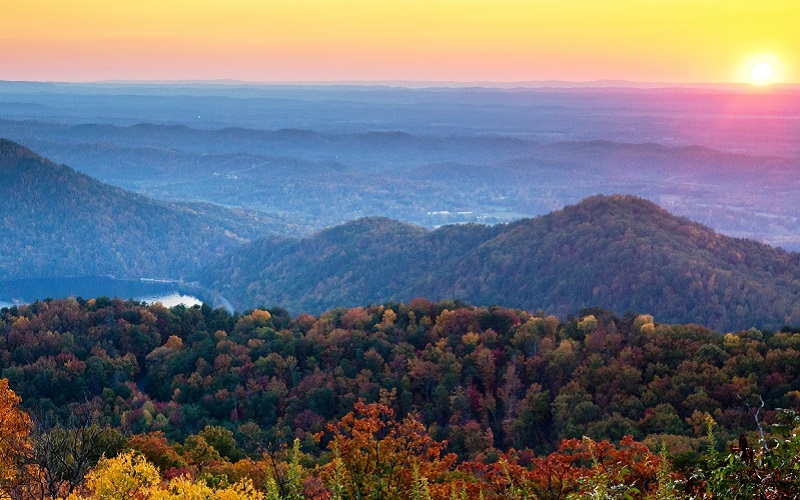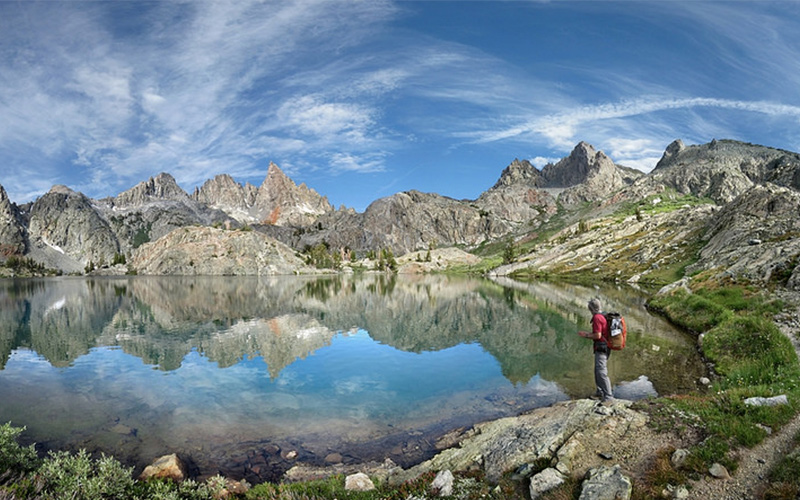By Mel Friedel, American Forests
When we think of a forest, we typically think of everything we can see: trees, mountains, animals, creeks, lakes, and so on. But we tend to ignore what’s underneath all that, and it might just be the most important part. The earth beneath the forest is the foundation of everything it holds — the history of how it came to be. Hundreds of millions of years ago, our favorite forests were being born through plate tectonics and rock formations. These geological forces shaped the land we see today and the forests we adore. Here are the stories of three of our most beautiful national forests and how they came to be.
Cherokee National Forest

Cherokee National Forest sits near the border of Tennessee and North Carolina. It is home to the Ocoee Whitewater Center, where the world’s first Olympic whitewater event on a natural river was held. This land didn’t became a national forest until June 14, 1920, but it existed long before then.
It all started 750 million years ago when streams carried sediments to an ancient ocean floor, and they hardened to form a rock layer 4 miles deep. This happened about 60 miles east of where the forest is now, because the rock layers were eventually pushed west by the collision between the North American and African plates around 300 million years ago. During the collision, the rock was under a lot of pressure, causing it to buckle, fold and compress into different shapes than when it was originally deposited. This pressure gave the forest’s mountains a ripple pattern as the rock layers pressed up vertically against one another in the accordion-like shape we see today.
Coconino National Forest

Further west, in northern Arizona, we find Coconino National Forest. Coconino has one of the largest ranges of biodiversity and landscape diversity of all of our national forests. Its landscape ranges from red rocks to pine forests, and contains Humphrey’s Peak: the highest point in all of Arizona at 12,633 feet. Coconino was deemed a national forest in 1908 when parts of the Tonto, Black Mesa and Grand Canyon National Forests were combined with the San Francisco Mountains National Forest. But way before this, the Coconino Sandstone rock formation was created. This formation lies beneath all of these regions and is responsible for the geological features of the forest.
Back in the Permian period, some 260 million years ago, the region was covered by desert. Eroding sand dunes were carried onto the land from the north. As this sand was deposited, it consolidated to form the large expanse of sedimentary rock now known as the Coconino Sandstone. However, there is much debate over how the sand was carried — some think it was a great flood that caused all the sediment transport in Earth’s early history, and others believe it was a slower erosion process through which wind carried sand down over time.
Today within the Coconino Sandstone we can see the tannish white, fine-grained layers separated by intermittent slivers of quartz sandstone. Sandstone is easily weathered (broken down) and eroded (carried away) because the grains are so fine. These qualities explain why there are so many ripple marks and cliff formations in Coconino National Forest, and observations like these allow us to try to make assumptions about how the formation occurred.
Sierra National Forest

If we travel even further west, we have Sierra National Forest. When it was named a national forest in 1893, it was the second national forest in California and the largest one at the time. Located on the western slope of the Sierra Nevada Mountain Range, the land is full of thickly forested rolling hills, while some regions feature a tundra landscape. Lying within the Sierra Nevada range, the forest and the mountains share a geological history that began roughly 40 million years ago. (While this may sound like a long time ago, the formation is actually relatively young compared to the 4.5 billion years that Earth has been around!)
The mountains were formed from granitic rocks, which is a type of volcanic rock that develops when molten lava from the Earth’s mantle travels through the crust and is released at the surface — think volcanoes! The lava cools and hardens soon after being exposed to the Earth’s surface, whether it be the air or the bottom of an ocean. The solidified lava rock forms a hill shape, getting bigger and taller as more lava breaks through, travels to the top of the hill, pours down the edges and hardens on top of them. Eventually, these lava rock hills become mountains, and some become volcanoes that are still here millions of years later.
How did these old (or not-so-old) rocks become forests, though? This is where soil comes into the picture. The soil of each forest is unique; it forms from the parent rock, or the bedrock, which is buried deep into the earth and has weathered and made its way up to the surface as small grains. The bedrock is weathered by chemical reactions, biological processes (involving creatures working their way through the ground) and physical influences such as wind and sun. As it breaks up into smaller grain sizes, it makes its way up to the surface where it becomes moist from rain and fertile from the minerals and nutrients it’s exposed to. The many layers of soil are constantly changing, and the forests they support allow for the organic matter that they need to stay dynamic and fertile.
These fascinating tales only scratch the surface of our forests’ formations and the dense histories of the lands beneath them. The many kinds of rocks, orientations of rock formations, and hundreds of millions of years during which all these rocks were changing provide a biography of everything we see on Earth’s surface today. Understanding how your favorite forest came to be and everything it went through to exist can make it even more valuable to you, so don’t let your knowledge of forest formations end here. Keep searching for the hidden histories of all the forests and natural areas you love.